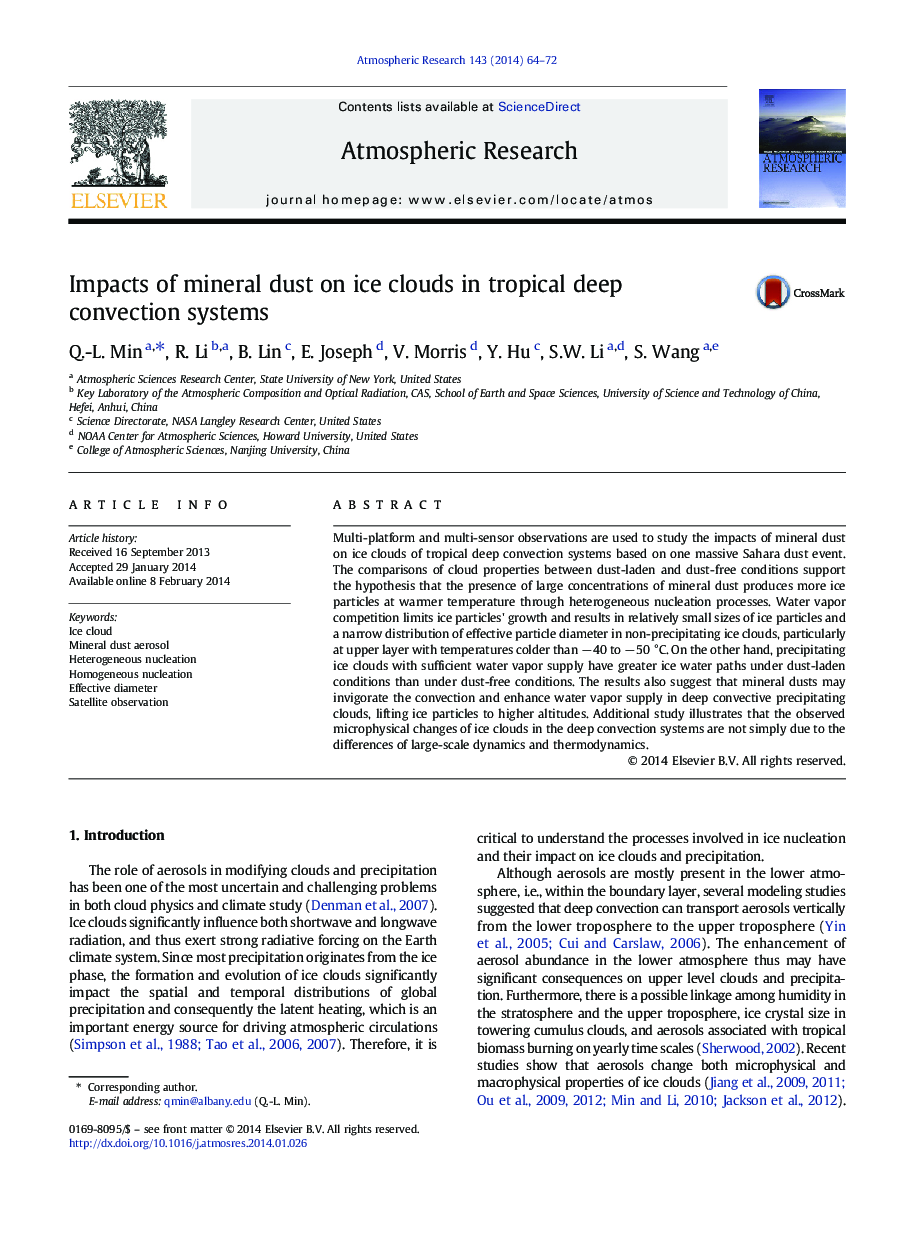| Article ID | Journal | Published Year | Pages | File Type |
|---|---|---|---|---|
| 4449894 | Atmospheric Research | 2014 | 9 Pages |
•The presence of mineral dust produces more ice particles at warmer temperature through heterogeneous nucleation processes.•Water vapor competition limits particle growth and results in small sizes of ice particles in non-precipitating ice clouds.•Precipitating ice clouds with sufficient water vapor supply have greater ice water paths under dust-laden conditions.•The observed microphysical changes of ice clouds are not simply due to the differences of dynamics and thermodynamics.
Multi-platform and multi-sensor observations are used to study the impacts of mineral dust on ice clouds of tropical deep convection systems based on one massive Sahara dust event. The comparisons of cloud properties between dust-laden and dust-free conditions support the hypothesis that the presence of large concentrations of mineral dust produces more ice particles at warmer temperature through heterogeneous nucleation processes. Water vapor competition limits ice particles' growth and results in relatively small sizes of ice particles and a narrow distribution of effective particle diameter in non-precipitating ice clouds, particularly at upper layer with temperatures colder than − 40 to − 50 °C. On the other hand, precipitating ice clouds with sufficient water vapor supply have greater ice water paths under dust-laden conditions than under dust-free conditions. The results also suggest that mineral dusts may invigorate the convection and enhance water vapor supply in deep convective precipitating clouds, lifting ice particles to higher altitudes. Additional study illustrates that the observed microphysical changes of ice clouds in the deep convection systems are not simply due to the differences of large-scale dynamics and thermodynamics.
